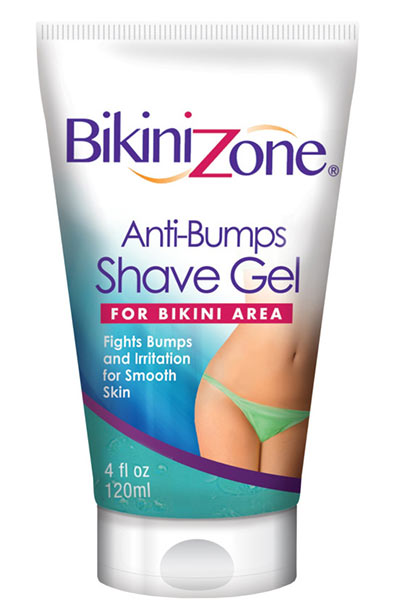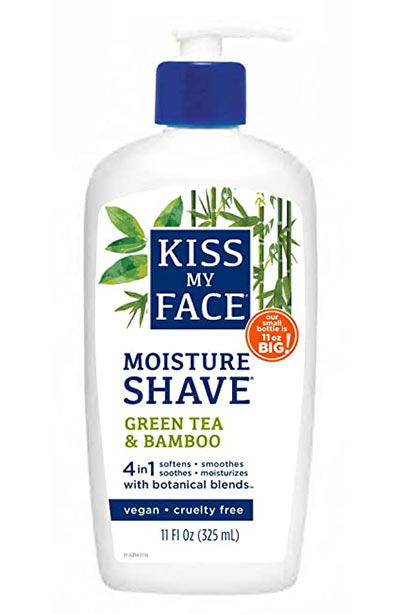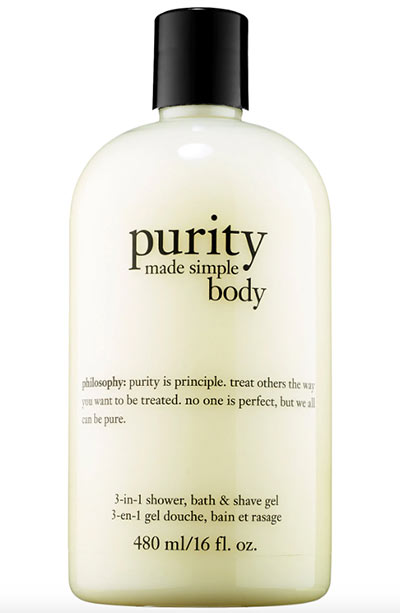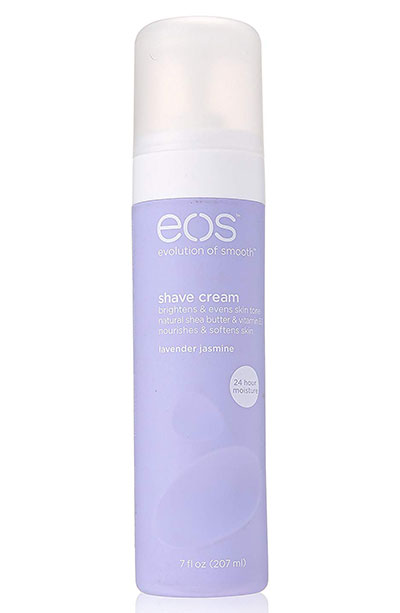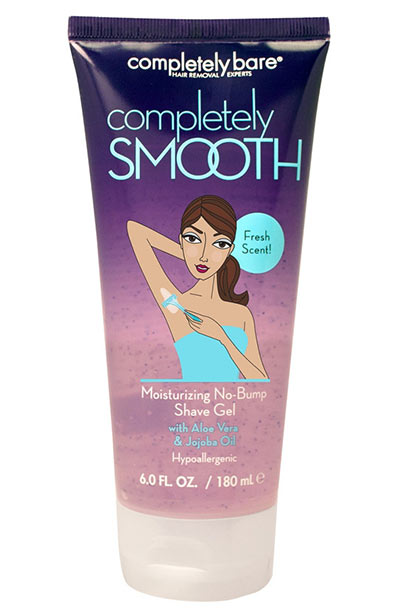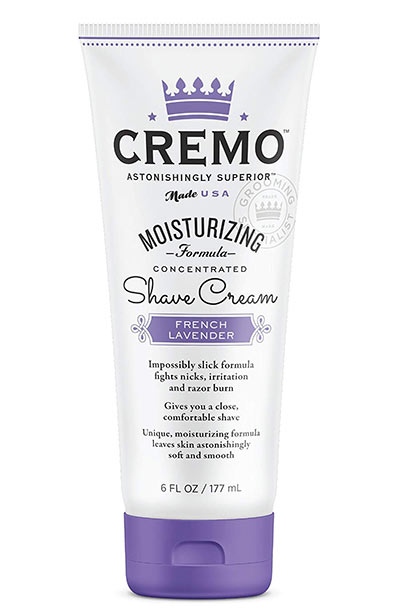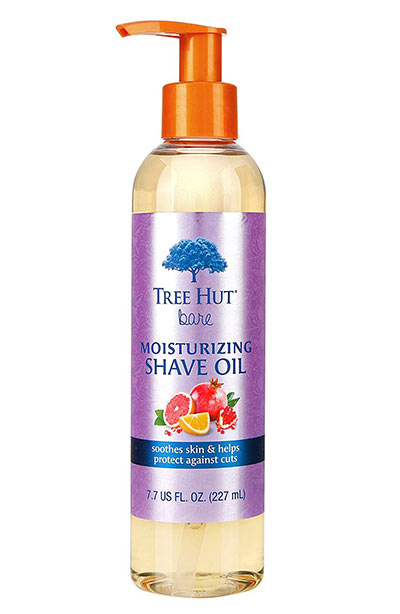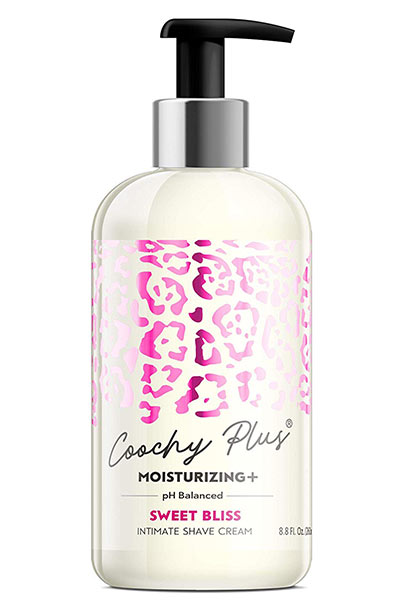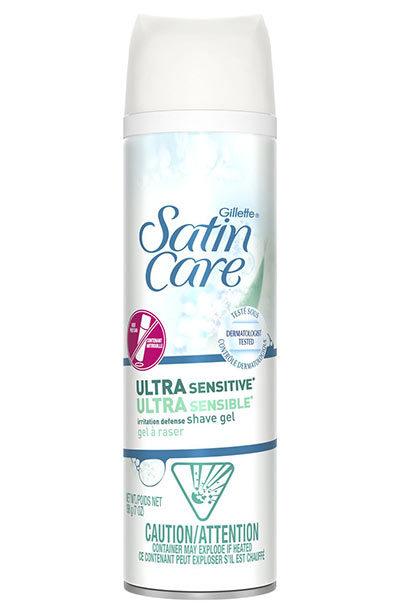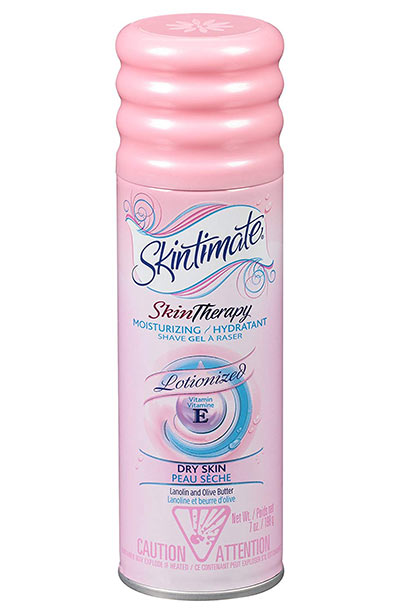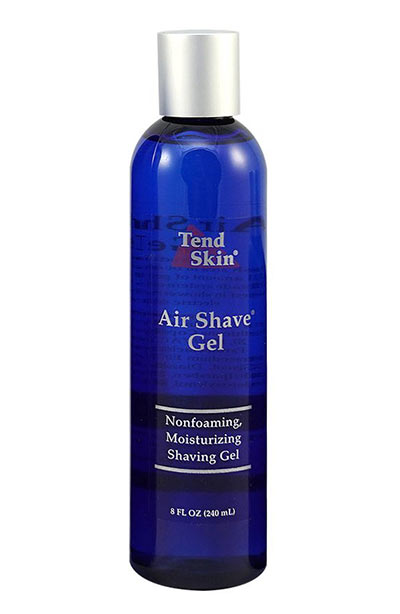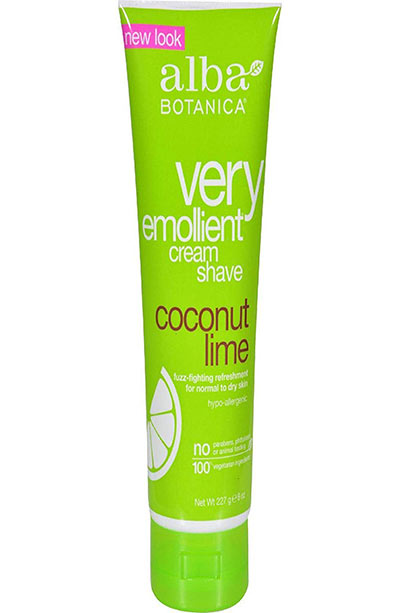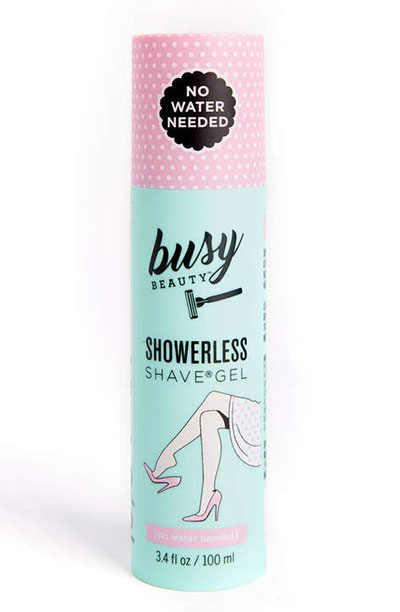- Shaving cream makes the shaving procedure safer, easier, creating a barrier of protection between the skin and the razor and providing deep hydration.
- Shaving cream lathers when mixed with water and is the best for getting a close shave.
- Shaving gel is the thinnest, most transparent type that doesn’t require water and is best for dry and sensitive skin types.
- Shaving foam is the most cost-efficient of the three, yet it tends to dry out the skin.
When it comes to shaving, razors aren’t the only tools you need to research and then invest in. Shaving cream is just as important a product, especially considering long-term skin care. A good shaving cream, gel, or foam will not only add a layer of protection between your skin and razor but will also facilitate getting a close shave as well as moisturizing your skin while you’re at it.
Below, we’ve listed 15 of the best shaving creams for women on the market, catering to an array of likes and skin types. You’ll also find out what sets shaving creams, shaving gels, and shaving foams apart, why you need to invest in any of the three, and how to choose the best one for your skin type. Lastly, we’ve added in a section about the right way to use shaving cream without damaging your skin and a few helpful tips to keep in mind as well.
In this article:
- Our Picks for the Best Shaving Creams for Women
- What to Look for in the Perfect Shaving Cream for You?
- Shaving Cream FAQ
Best Shaving Creams Overview
- Best Overall: Aveeno Therapeutic Shave Gel
- Best for Bikini Line: Bikini Zone Anti-Bumps Shave Gel
- Best Vegan Formula: Kiss My Face Shaving Cream
- Best Multitasking: Philosophy Purity Made Simple 3-in-1 Shower, Bath & Shave Gel
- Best Moisturizing: eos Ultra Moisturizing Shave Cream
- Best for Ingrown Hairs: Completely Bare Completely Smooth Moisturizing No-Bump Shave Gel
- Best for Sensitive Skin: Cremo French Lavender Moisturizing Shave Cream
- Best Natural Formula: Tree Hut Bare Moisturizing Shave Oil
- Best for Sensitive Areas: Coochy Plus Intimate Shaving Cream
- Best Budget: Gillette Satin Care Ultra Sensitive Women’s Shave Gel
- Best Luxury: Truly Coco Cloud Luxury Shave Butter
- Best for Dry Skin: Skintimate Skin Therapy Moisturizing Shave Gel
- Best for Razor Bumps: Tend Skin Air Shave Gel
- Best Nourishing: Alba Botanica Very Emollient Coconut Lime Shave Cream
- Best for Travel: Busy Beauty Showerless Shave Gel
Our Picks for the Best Shaving Creams for Women
With hundreds upon hundreds of brands and textures to choose from, we’ve rounded up 15 of the best women’s shaving creams, gels, and foams for you to pick.
What to Look for in the Perfect Shaving Cream for You?
With so many options to choose from, how do you go for the right shaving cream? Consider these factors when shopping for one:
The Product Type
Now that you are aware of the multitude of options on the market, you might be wondering what exactly is the difference between a shaving cream, a shaving gel, and shaving foam. The difference lies largely in the formula.
Overall, shaving creams and gels are better suited for skin care, as they make use of an emulsion of oils and moisturizing ingredients in comparison to foams, but they can be costly in comparison as well. However, ultimately, the best way to settle on a type for you is to experiment, so take another gander at our list of recommended products to settle on a few testing options.
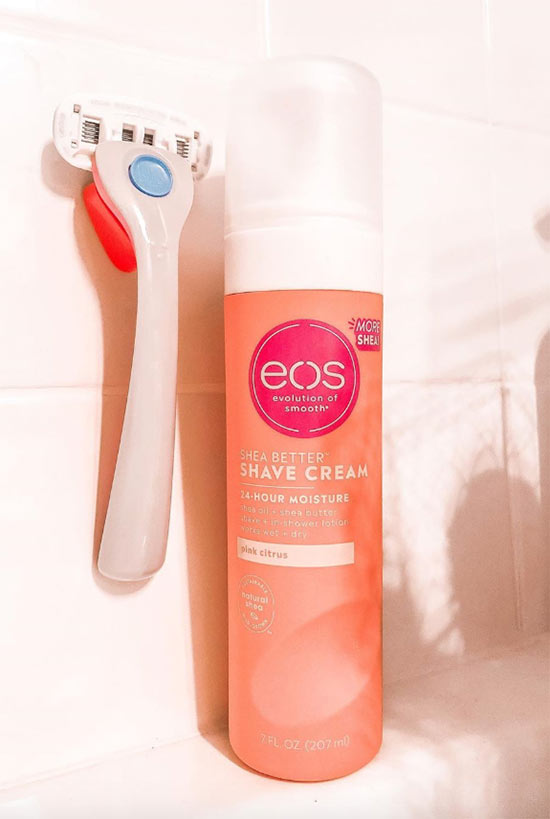
Shaving Cream
Formulated with oils, soaps, surfactants, and water, traditionally, shaving cream is meant to be mixed with water (though, some can be used as is) to create a lather on the targeted area. Shaving creams are the best when you are looking for as close a shave as possible, and, in comparison to gels, they are easier to rinse off and provide a better feel on the skin. Shaving cream usually provides deep hydration, good lubrication, and is soothing and refreshing.
The only drawback of shaving cream is that when it comes in an aerosol can, it can dry out the skin, and it tends to quickly clog the razor, making you rinse it more often.
Shaving Gel
Unlike shaving creams, shaving gel does not require any water, doesn’t foam, and simply needs to be applied as is. The lack of a lather makes it easier to see the area you are shaving, and its texture allows for better lubrication, which is recommended for those with sensitive skin.
Shaving gel is thinner, goes on transparent, moisturizes, protects the skin, and you also use less of a product and time for shaving, which makes it more cost- and time-effective than a cream. They are also typically made of more enhanced lubricants, being perfect for dry and sensitive skin types.
However, the thickness of shaving gel leads to razor clogging. Many shaving gels are fragrance-free, which is great, as fragrance can sometimes irritate the skin.
Shaving Foam
Shaving foam comes in an aerosol can, which packs a lot of air inside, resulting in the voluminous build of product and instant lather. It’s easier to rinse off too.
Shaving foam is one of the least recommended shaving products, as it tends to dry out the skin due to its alcohol content, while its less dense, airy texture does little to hold the hair away from the skin resulting in razor burns.
The lack of lubrication can also lead to higher chances of skin irritation. Shaving foams can still get the job done with extra care taken, and they are, generally, more cost-efficient.
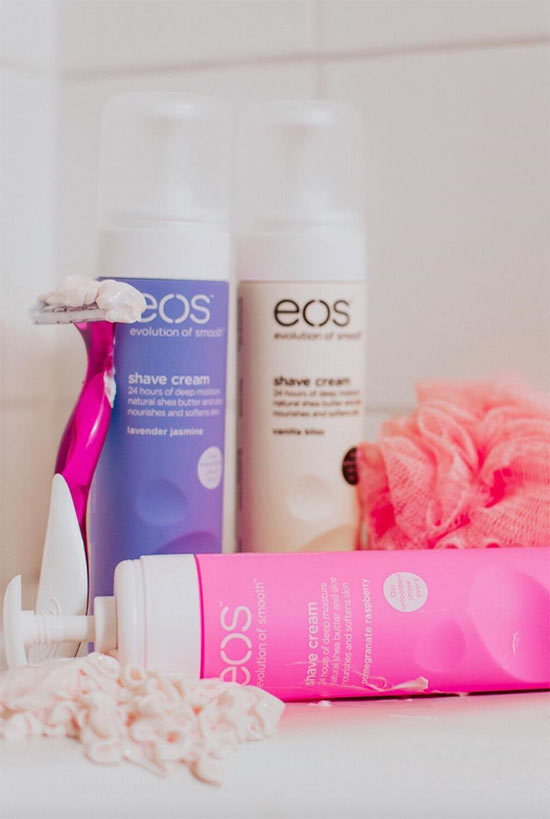
The Perfect Formula for Your Skin Type
No matter what skincare product you’re purchasing, always check to make sure it’s been formulated for your specific skin type. This refers to having creams, gels, and foams, too!
Sensitive Skin
The key element to look for in your choice of shaving product is one specifically designed for sensitive skin. Skip options that contain fragrance, alcohol, or any other skin irritants and instead choose one, which also holds soothing ingredients, like aloe vera.
Dry Skin
Moisturize. Moisturize. Moisturize. This is the mantra that should be playing in your head when you’re looking for a suitable formula for dry skin. Glycerin is an ingredient to keep an eye out for, as it helps the skin attract and retain its own moisture. Give your preference to shaving gels, since those are the best for dry skin types.
Oily Skin
Oily skin types are more likely to develop razor bumps and burns, as well as ingrown hairs and a skin rash. Lubricating and non-comedogenic shaving products are great for oily skin, as lubrication will help prevent bumps and burns, while non-comedogenic ingredients work against breakouts.
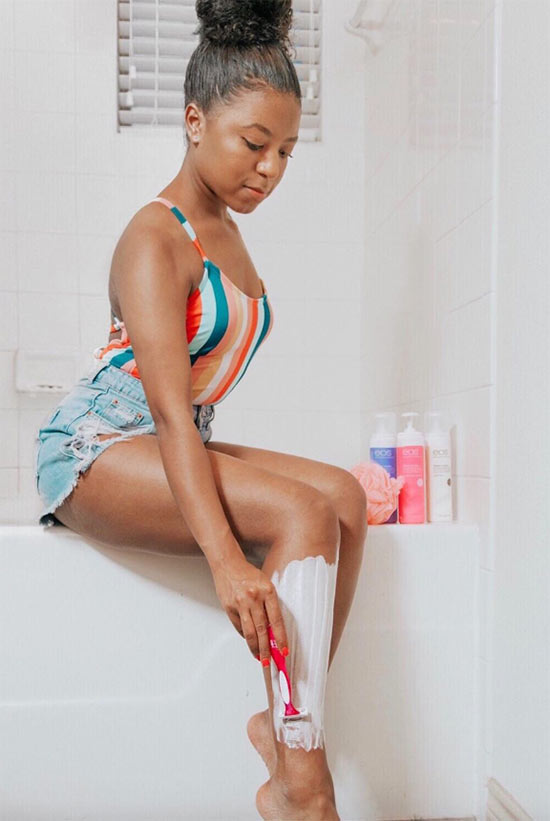
Shaving Cream FAQ
To make the best out of your shaving lotion, here are some common questions answered:
Purchasing razors and other shaving products can run up quite a tab over time, and that brings up the question of whether any form of shaving cream, gel, or foam is actually worth it. After all, dry shaving or shaving wet skin seems to get the job done well enough. But not to the extent it can be!
There are four main benefits to using a form of shaving lotion:
• Protection: Essentially, it acts as a thin layer of protection between your razor and your skin. This then helps minimize and eliminate razor burns, skin redness, as well as nicks and cuts.
• Moisturizing: The formulas are often enriched with a number of nutrients to aid in smoothing and soothing the skin. Basically, you are running a blade against your skin, so the formula tends to battle whatever micro-traumas your skin is undergoing during a shave.
• Keeping Track: Everybody loves to see tangible progress, so watching the cream shave off swipe by swipe is a great way of noting progress as you shave; plus, it’s so satisfying!
• Easier: The formula also aids in softening hairs for an easier and closer shave. This is especially helpful to those with coarser hairs and will keep you from having to double shave one spot.
For the best results, follow these shaving steps:
• Prepare your skin first by either washing the targeted area with warm water or holding a heated towel against it. This will help soften the hairs and open the pores for easy hair removal.
• Apply shaving cream, adding a bit of water, and lathering it up before evenly spreading across your targeted area. Work it in well. Use a warm shaving brush for the best results.
• Hold your skin taut and then shave against the direction your hair grows in small strokes.
• After shaving, rinse with warm water and then gently pat the skin dry.
• Apply moisturizer after.
General Tips
• The sharper the blade, the better the shave. In fact, using dull blades can lead to cuts.
• If you’re someone with sensitive skin, use a razor with fewer blades. Generally, a one- to two-blade razor does the job without impacting the subdermal layer of your skin.
• For areas with longer hair, trim away the excess hair to avoid razor clogging.
• For the bikini area, hold a warm towel against it for at least 5 minutes.
• If you shave in the shower, exfoliate the area first. Getting rid of dead skin cells will help get the closest shave possible.
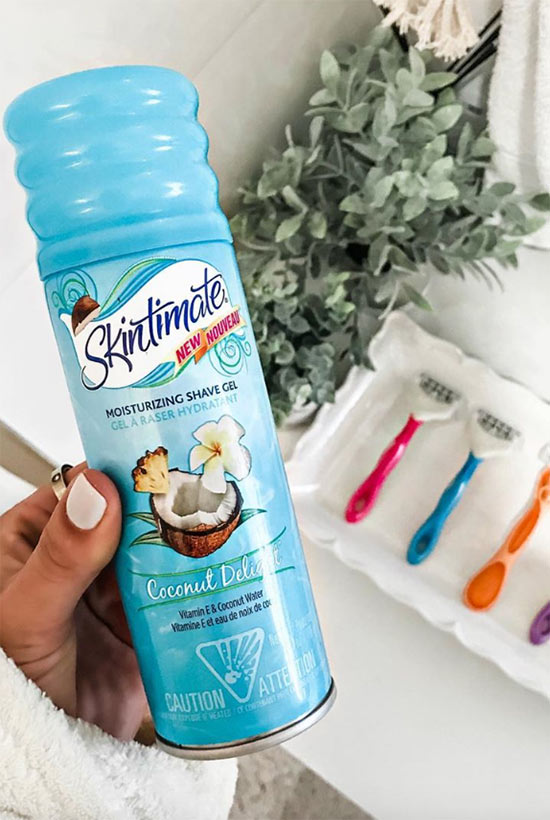
Photos via @ventifashion, Instagram, Sephora, Ulta, Amazon



